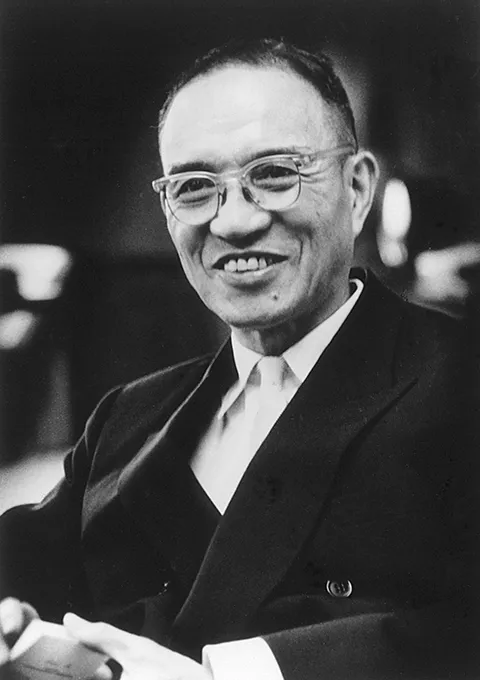Founder
The Founder, Ishibashi Shojiro
The founder of the Ishibashi Foundation, Ishibashi Shojiro was born in 1889 in Kurume, Fukuoka Prefecture. At the age of 17, he took over the family tailoring business, growing it into a nationwide company by manufacturing jikatabi (split-toed heavy cloth work shoes with rubber soles), which he invented, in addition to rubber shoes. In 1931, he founded the Bridgestone Tire Co., Ltd. (now the Bridgestone Corporation), which became the first Japanese company to produce tires domestically. He went on to grow the company into one of Japan’s leading corporations.
Shojiro also believed that contributing to society was important in corporate management. He wrote in his book as follows: “I have set my sights on contributing to the advancement and development of society by constantly seeking insight into the changes of the times, trying to be ahead of the times, and manufacturing products of superior quality; the greater one's contribution to society the more one’s business will grow.”
At the same time, he involved himself in cultural projects from a young age. In 1928, he donated the school site and building to establish Kyushu Medical School (currently Kurume University). In addition, for many years, he donated various facilities and subsidies to schools and educational institutions in Kurume and Tokyo.
He began collecting paintings around 1927, and early on he had the intention of showing them to the public. In 1952, he opened the Bridgestone Gallery (currently the Artizon Museum) on the second floor of the Bridgestone Building in Kyobashi, Tokyo. He made his collection available to the public. After that, he built and donated numerous cultural facilities, including the Ishibashi Cultural Center in Kurume (1956), the Japanese Pavilion at the Venice Biennale (1956), and the National Museum of Modern Art, Tokyo (1969). Shojiro passed away in 1976. He spent his life contributing to society through his corporate management of Bridgestone, etc. and through various cultural projects.

